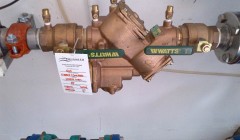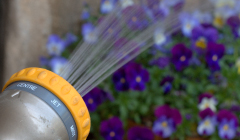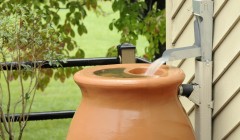Water System and Reports
Water Master Plan
In 2015, the District updated its Water Master Plan (large file). This study assists the District in understanding the capacity of the current water system and identifies servicing opportunities and constraints in order that future upgrades may be planned in an economic and efficient manner.
Water Source
The District of Squamish relies on the Powerhouse Springs well field as our main source of potable water, located east along the Mamquam River. This groundwater is drawn from the Ring Creek Aquifer which is recharged by rainwater seepage through the lava flow, the Mamquam Glacier, Ring Creek and Mamquam River. Supplemental water sources include surface water intakes on Mashiter Creek and the Stawamus River. A Well Protection Plan was adopted in May 2014 for the seven municipal water supply wells operating at the Powerhouse Springs well field.
The District of Squamish introduced the Outdoor Water Use bylaw in 2013 to help with water conservation in our community.
The District of Squamish adopted a Water Conservation Plan to reduce water consumption by 15% by 2031 through a range of measures including outdoor water use restrictions, building bylaws, water metering, conservation oriented water rates and more. Find more out at the following link: Water Conservation Plan
How much water does Squamish use?
Visit the "Water Facts" page to find out.
Water Quality & Treatment
Squamish is fortunate to have high quality groundwater available for use. Water is continuously monitored through an online system that alerts staff if water values change drastically. Municipal water is treated by chlorination, but no fluorination. Sampling sites through the community monitor the residual chlorine to avoid injecting too much chlorine and at the same time keeping the minimum required amount in the system at all times for health and safety.
Water at various locations in the distribution system is also sampled weekly for bacteriological data (E. coli & Total Coliform). These samples are sent to the Centre for Disease Control and drinking water reports are available on the Vancouver Coastal Health Authority website. If you have any questions or comments, please contact the local Health Authority office at 604.892.2293.
Water samples from Powerhouse Springs (DOS primary water source), as well as the emergency backup surface water sources, undergo a full chemical and physical analysis twice a year to assess water quality. The annual results of the water quality analyses are compiled and can be found below.
- 2023 Water Quality Report
- 2022 Water Quality Report
- 2021 Water Quality Report
- 2020 Water Quality Report
- 2019 Water Quality Report
- 2018 Water Quality Report
- 2017 Water Quality Report
- 2016 Water Quality Report
- 2015 Water Quality Report
- 2014 Water Quality Report
- 2013 Water Quality Report
- 2012 Water Quality Report
Inspecting our Drinking Water
The protection of our drinking water is crucial to preventing the spread of water-borne disease and protecting us from chemical or other contamination.
Vancouver Coastal Health environmental health officers approve, inspect and monitor drinking water supplies to ensure they comply with regulatory requirements.
Vancouver Coastal Health recommends that a best practice is to flush tap water until it runs cold before drinking it. A variety of water quality resources including how to protect yourself from lead in drinking water are available on the Vancouver Coastal Health website. We have created an FAQ to help answer questions on lead and drinking water.
View our News Release and Fact Sheet on water quality and treatment.
Maintenance Programs & Leak Detection
The entire watermain system is flushed each fall to maintain water quality, maximize hydraulic capacity, remove stagnant water at dead ends, and any unwanted buildup in the pipes.
Detecting system leaks is a high priority and all reports of ponding water are investigated. Special listening equipment is used to try and pinpoint problems. More sophisticated equipment has been installed and is continuously monitoring large sections of the community for excessive flows.
Water service leaks on private property are also a concern for the District of Squamish. For more information on the risks service leaks pose and how to fix them, please visit our Residential Service Leaks page.
If you suspect or find a leak that the District should be aware of, please call the Public Works office at 604.815.6868 during regular business hours, or 604.815.4040 for emergency situations after business hours.
Cross Connection Control
A cross connection control program was established in 2011 to help protect our water system. The purpose of this program is to prevent contaminated water from re-entering the water distribution system at service connections to businesses and homes.
Want to know more about the District's water system? Click here to find out more fun facts.



